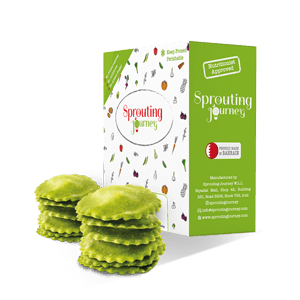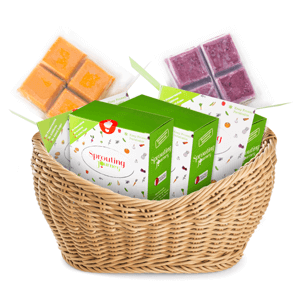We’ve all heard it before, the emphasis on high iron foods and that it is important for our health. But how well do we understand what iron really is and what role does it play in our body? More importantly how much Iron do our children need? Where to get it from? And how to recognize signs of deficiency?
In this blog I will break it down to give you the knowledge you need on iron to make conscious decisions when feeding your child!
What is Iron, and why is it important?
Iron is the fourth most abundant elements on earth, forming much of its outer and inner core. It is a metallic mineral originating from Iron Ore; which are rock minerals from which iron can be extracted. Iron is also present in living organisms including humans, animals, and many plant foods.
The mineral iron is very important for sustaining life on earth and is essential for the well-being of most living organisms. Plants absorb iron from the soil and use it during Photosynthesis ; their energy creation process. Humans and animals need iron to make Hemoglobin; the substance in red blood cells that is responsible for carrying oxygen from the lungs to the rest of the body enabling cells to produce energy. In fact, 2/3 rd of the iron in our body is found in hemoglobin.
When Iron levels are too low the body cannot produce enough red blood cells to carry oxygen around leading to symptoms of fatigue, weakness, and low concentration; a condition known as Iron Deficiency Anemia . Low iron status can also interfere with proper neurodevelopment in infants and causes weakness in the immune system. Ensuring your child has enough iron is critical to avoid physical and mental development delays, behavior problems, and increased risk of infections.
How Much Iron Does My Baby Need?
Babies born healthy at full term have sufficient iron stores that will sustain them up to the first 6 months of life. Breast milk will also provide babies with all their iron needs up to 6 months of age. However, after the age of 6 months an infant’s iron requirements drastically shoots up as their blood volume expands and their tiny bodies experience rapid growth, quickly depleting their iron stores. Reports indicate that after the age of 6 months, the amount of iron in breast milk is not enough to meet a baby’s body demands and supplementation through iron-rich foods is critical to avoid deficiencies . It is important to note that not all babies are born with high iron stores, there are factors that can affect the iron status of new-born babies.
Factors Affecting Iron Status in New-Born Babies
- Mom’s iron status during pregnancy
- Weather the baby was born prematurely or not
-
Timing of the umbilical cord clamping (early clamping reduces blood volume delivery to baby while delayed clamping up to 2-3 minutes will lead to baby receiving more blood from the placenta strengthening their iron stores)
How do I Know if My Child is at Risk of Iron Deficiency?
The risk of iron deficiency is different for breastfed babies and formula-fed babies. Unlike breast milk, which only has enough iron for the first 6 months of life, most infant formulas are fortified with iron and contain more iron than breast milk does.
This means that breastfed babies are at more risk for iron deficiency than formula fed babies and parents must take extra caution to ensure their iron needs are met through complimentary foods.
For formula-fed babies, it is important to know how much iron is in each serving of the formula and multiply that with the number of feeds a day to know how much iron your baby is getting from milk and whether or not you have to watch out for iron intake from other food sources.
The table below displays Iron’s Recommended Daily Allowance for infants and toddlers:
|
Age
|
RDA
|
| Infants (Birth – 6 months) |
0.27 mg/day |
| Infants (6 months – 12 months) |
11 mg/day |
| Toddlers (1-3 years) |
7 mg/day |
| Toddlers (4-8 years) |
10 mg/day |
Table1
Risk Factors of Iron Deficiency in Infants
|
Age
|
Risk Factors of Iron Deficiency
|
| Newborn – 6 Months
|
- Mom has low iron status during pregnancy
- Baby is born premature or has a low birth weight
- Early clamping of the umbilical cord
|
| Infants 6 – 12 Months |
- Breastfed babies who are not getting enough iron through their diet
- Formula fed babies whose formula is not “iron-fortified” and not getting enough iron through their diet.
|
|
|
|
|






